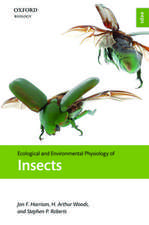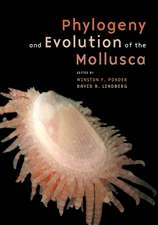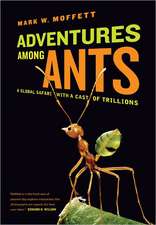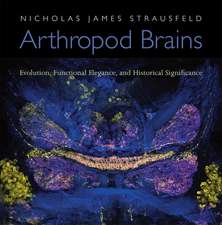Aquatic Mites from Genes to Communities
Editat de Heather Proctoren Limba Engleză Hardback – 18 noi 2004
| Toate formatele și edițiile | Preț | Express |
|---|---|---|
| Paperback (1) | 554.48 lei 38-44 zile | |
| SPRINGER NETHERLANDS – dec 2010 | 554.48 lei 38-44 zile | |
| Hardback (1) | 644.82 lei 6-8 săpt. | |
| SPRINGER NETHERLANDS – 18 noi 2004 | 644.82 lei 6-8 săpt. |
Preț: 644.82 lei
Preț vechi: 758.60 lei
-15% Nou
Puncte Express: 967
Preț estimativ în valută:
123.39€ • 134.45$ • 103.97£
123.39€ • 134.45$ • 103.97£
Carte tipărită la comandă
Livrare economică 23 aprilie-07 mai
Preluare comenzi: 021 569.72.76
Specificații
ISBN-13: 9781402027031
ISBN-10: 1402027036
Pagini: 224
Ilustrații: V, 210 p. 38 illus., 1 illus. in color.
Dimensiuni: 155 x 235 x 19 mm
Greutate: 0.54 kg
Ediția:2004
Editura: SPRINGER NETHERLANDS
Colecția Springer
Locul publicării:Dordrecht, Netherlands
ISBN-10: 1402027036
Pagini: 224
Ilustrații: V, 210 p. 38 illus., 1 illus. in color.
Dimensiuni: 155 x 235 x 19 mm
Greutate: 0.54 kg
Ediția:2004
Editura: SPRINGER NETHERLANDS
Colecția Springer
Locul publicării:Dordrecht, Netherlands
Public țintă
ResearchCuprins
Aquatic mites: from genes to communities — an introduction.- The biology and life history of arctic populations of the littoral mite Ameronothrus lineatus (Acari, Oribatida).- Latitudinal variation in habitat specificity of ameronothrid mites (Oribatida).- Geographical and ecological distribution of marine halacarid genera and species (Acari: Halacaridae).- Traditional water mite fixatives and their compatibility with later DNA studies.- Random amplified polymorphic DNA analysis of kinship within host-associated populations of the symbiotic water mite Unionicola foili (Acari: Unionicolidae).- Recapture of male and female dragonflies in relation to parasitism by mites, time of season, wing length and wing cell symmetry.- Specificity of attachment sites of larval water mites (Hydrachnidia, Acari) on their insect hosts (Chironomidae, Diptera) — evidence from some stream-living species.- Communication via sex pheromones within and among Arrenurus spp. mites (Acari: Hydrachnida; Arrenuridae).- Red, distasteful water mites: did fish make them that way?.- Of spates and species: responses by interstitial water mites to simulated spates in a subtropical Australian river.- Environmental parameters determining water mite assemblages in Costa Rica.- Diversity, distribution and ecology of water mites (Acari: Hydrachnidia and Halacaridae) in high Alpine lakes (Central Alps, Italy).
Caracteristici
Explores the distribution, ecology, behaviour, genetics and evolution of the most diverse of these astonishing arachnids The results of these studies raise as many interesting questions as they answer, and should provoke more investigations of the biology of freshwater and marine Acari











